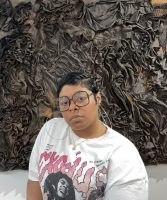CAA News Today
CAA Advocacy Policy and Procedures
posted by CAA — Apr 22, 2024
As the preeminent international leadership organization in the visual arts, CAA has an important role to play in public discourse on matters related to visual arts scholarship and practice. The CAA Board of Directors, Executive Director, members, and staff contribute to public understanding of visual arts advocacy through our newsletter, ED letters, social media platforms, special events, and sessions/workshops at our Annual Conference.
When the Executive Director or the Advocacy Committee perceives good reason to publish a statement on behalf of CAA (which may involve requesting endorsements from affiliated member societies/organizations or signing on to advocacy statements drafted by those affiliates), the Advocacy Committee convenes to interrogate the issue. If this issue is deemed in service to CAA’s mission and a majority of Advocacy Committee members agree to act, a member of the committee or staff will draft an original statement depending on capacity. The Advocacy Committee may approve the statement, reject it, or request changes; responses are needed from all members as soon as possible and no later than two days after receipt. The Advocacy Committee and Executive Director will agree on any action to be taken in response to expressed concerns. Once the entire committee reviews and approves the final draft, the statement will go live on the CAA website and will be distributed across social media channels when appropriate. In the case of a sign on to another organization’s advocacy statement, the Executive Director will share the sign on opportunity with the Advocacy Committee, and they will discuss and vote to determine whether to proceed.
The Executive Director is authorized to issue statements on behalf of the organization without review by the Advocacy Committee on time-sensitive matters (see example). At these times, the ED will specify this an ED response, so as not to speak on behalf of the Advocacy Committee, Executive Committee, or Board of Directors without consent.
CAA cannot respond to every advocacy request brought forth by our members. Our goal remains maximum impact when advocating for the field. There are times when calls to advocacy from one constituency directly conflict with another. It is for this reason that it is imperative our Board of Directors, and by extension, our Advocacy Committee remain diverse in background, field, and perspective, to ensure decisions are made as objectively as possible on behalf of membership and the field; advocacy action must also be in direct alignment with our mission, and in accordance with our 501(c)(3) status.
CAA must concentrate its energy and prestige on matters related to the advancement and protection of visual arts and scholarship, including academic infrastructure and professional practice.
Because CAA is the umbrella organization for a diverse membership with varying needs and viewpoints, we cannot engage in party politics and cannot take a stand on issues that are not in direct alignment with our mission.
CAA SOCIAL MEDIA POLICY
The CAA Board, Executive Director, and staff agree that due to the limitations of the mode, comments made on social media about visual arts practice or scholarship by CAA staff are most effective when they are constructive and celebratory of the achievements of CAA and members of the CAA community. CAA staff and Board members may wish and indeed are encouraged to share information about CAA and its programs, including on social media.
CONTACT US
If you have an advocacy request, please contact info@collegeart.org with the subject line “Constituent Advocacy Request” and your concern will be escalated to the Advocacy Committee for immediate discussion.
Policy adopted by the CAA Board of Directors on February 18, 2024.
Call for Nominations: Jury Members for CAA Grants and Awards (2024–2027)
posted by CAA — Apr 03, 2024
CAA invites nominations and self-nominations for individuals with relevant expertise to serve on our juries for Awards for Distinction, Publication Grants, Travel Grants, and Fellowships. Jury service is one of the most impactful volunteer positions at CAA; help select our next awardees and grantees!
To apply, send an e-mail to Cali Buckley, CAA Manager of Grants and Awards & Director of CAA-Getty International Program, with the following:
- Statement of interest outlining qualifications and experience of nominee (150 words maximum)
- CV (two pages maximum)
Three-year terms begin in July. Current CAA Committee and Editorial Board members are not eligible to apply.
Deadline: June 1, 2024
CURRENT JURY OPENINGS
- Art Journal Award
- Charles Rufus Morey Book Award for Non-catalogue Books in the History of Art
- Arthur Kingsley Porter Prize for Art Bulletin articles
- The CAA/American Institute for Conservation Award for Distinction in Scholarship and Conservation
- Jury for the Artist Award for Distinguished Body of Work, Distinguished Artist Award for Lifetime Achievement, and Distinguished Teaching of Art Award
- Distinguished Feminist Awards for Scholars and Artists
- Millard Meiss Publication Fund for Books in Art History
- Wyeth Foundation for American Art Publication Grant
- Art History Fund for Travel to Special Exhibitions
- Professional Development Fellowship in Visual Art
- Michael Aurbach Fellowship for Excellence in Visual Art
Call for Editor-in-Chief, The Art Bulletin
posted by CAA — Mar 11, 2024
The Art Bulletin Editorial Board invites nominations and self-nominations for the position of editor-in-chief for a three-year term—July 1, 2025–June 30, 2028—with service as incoming editor designate from July 1, 2024–June 30, 2025, and as past editor from July 1, 2028–June 30, 2029.
The candidate should have published substantially in the field and may be an academic, museum-based, or independent scholar; institutional affiliation is not required. The Art Bulletin features leading scholarship in the English language in all aspects of art history as practiced in the academy, museums, and other institutions. From its founding in 1913, the quarterly journal has published, through rigorous peer review, scholarly articles and critical reviews of the highest quality in all areas and periods of the history of art.
Working with the editorial board, the editor-in-chief is responsible for the content and character of the journal. Each issue has approximately 150 editorial pages, not including book and exhibition reviews, which are the responsibility of a reviews editor. The editor-in-chief reads all submitted manuscripts, refers them to appropriate expert referees for peer review, provides guidance to authors concerning the form and content of submissions, and makes final decisions regarding acceptance or rejection of articles for publication. The editor-in-chief also works closely with the CAA staff in New York, where production for The Art Bulletin is organized. This is a half-time position. CAA provides financial compensation to the editor’s institution, usually in the form of course release or the equivalent, for three years. The editor is not compensated directly. The term includes membership on the Art Bulletin Editorial Board.
The editor-in-chief attends the Art Bulletin Editorial Board’s three meetings each year and submits an annual report to the CAA Board of Directors.
Candidates must be current CAA members and should not be serving on the editorial board of a competitive journal or on another CAA editorial board or committee. The Art Bulletin also encourages nominations from two-person editorial teams representing divergent and/or complementary fields and approaches. Editors may not publish their own work in the journal during the term of service. Candidates should have a willingness to explore webinars and podcasts, and conduct other outreach activities.
Nominators should ascertain their nominee’s willingness to serve before submitting a name; self-nominations are also welcome. Interested applicants—both self-nominated or nominated by someone else—should submit a CV and a cover letter in one PDF document to Eugenia Bell, Editorial Director.
Deadline: Monday, May 6.
The Art Bulletin Seeks An Editorial Board Member
posted by CAA — Mar 11, 2024
CAA invites nominations and self-nominations for one (1) individual to serve on The Art Bulletin Editorial Board for a four-year term, July 1, 2024–June 30, 2028. The ideal candidate has published substantially in the field and may be an academic, museum-based, or independent scholar; institutional affiliation is not required. The Art Bulletin features leading scholarship in the English language in all aspects of art history as practiced in the academy, museums, and other institutions.
The editorial board advises The Art Bulletin Editor-in-Chief and assists by seeking authors, articles, and other content for the journal; performs peer review and recommends peer reviewers; may propose new initiatives for the journal; and may support fundraising efforts on the journal’s behalf. Members also assist the editor-in-chief to keep abreast of trends and issues in the field by attending and reporting on sessions at the CAA Annual Conference and other academic conferences, symposia, and events in their fields.
The Art Bulletin Editorial Board meets three times a year, with meetings in the spring and fall (remote) plus one at the CAA Annual Conference in February (board members pay travel and lodging expenses to attend the conference in February. Members of all editorial boards volunteer their services to CAA.)
Candidates must be current CAA members in good standing and should not be serving on the editorial board of a competitive journal. Members may not publish their own work in the journal during the term of service. CAA encourages applications from colleagues who will contribute to the diversity of perspectives on The Art Bulletin Editorial Board and who will engage actively with conversations about the discipline’s engagements with differences of culture, religion, nationality, race, gender, sexuality, and access. Nominators should ascertain their nominee’s willingness to serve before submitting a name; self-nominations are also welcome. Interested applicants—both self-nominated or nominated by someone else—should submit a CV and a cover letter as a single PDF document by Monday, May 6 to Eugenia Bell, Editorial Director.
Congratulations to the 2024 Distinguished Awardees!
posted by CAA — Mar 04, 2024
Each year at the Annual Conference CAA honors outstanding achievements in visual arts and art scholarship during Convocation by announcing the annual Awards for Distinction recipients. Congratulations to this year’s awardees!
Distinguished Award for Lifetime Achievement in Writing on Art
Distinguished Artist Award for Lifetime Achievement
Carrie Mae Weems and Suzy Lake
Art Journal Award
Ken Gonzales-Day, “Race, Whiteness, and Absence in Studio Practice,” Art Journal, Fall 2023
Alfred H. Barr Jr. Award
Oswaldo Chinchilla Mazariegos, James A. Doyle, and Joanne Pillsbury, eds., Lives of the Gods: Divinity in Maya Art, Metropolitan Museum of Art, 2022
Alfred H. Barr Jr. Award for Smaller Museums, Libraries, Collections, and Exhibitions
Perrin Lathrop, ed., African Modernism in America, Yale University Press and the American Federation of Arts, 2022
Frank Jewitt Mather Award
Kobena Mercer, Alain Locke and the Visual Arts, Yale University Press, 2022
Frank Jewitt Mather Honorable Mention
Andrea Giunta, The Political Body: Stories on Art, Feminism, and Emancipation in Latin America, trans. Jane Brodie, University of California Press, 2023
Charles Rufus Morey Book Award
Matthew Francis Rarey, Insignificant Things: Amulets and the Art of Survival in the Early Black Atlantic, Duke University Press, 2023
Arthur Kingsley Porter Prize
Daniel M. Zolli, “Making Up Materials: Donatello and the Cosmetic Act” The Art Bulletin, 105.4, 2023: 36–63.
CAA/AIC Award for Distinction in Scholarship and Conservation
Han Neevel and Birgit Reissland
Artist Award for a Distinguished Body of Work
Distinguished Teaching Award (Art)
Distinguished Teaching Award (Art History)
Monica Juneja
Distinguished Feminist Award (Art)
Distinguished Feminist Award (Art History)
Excellence in Diversity Award
Isabella Stewart Gardner Museum
Michael Aurbach Fellow Announced!
posted by CAA — Mar 04, 2024
Congratulations to this year’s recipient of the Michael Aurbach Fellowship for Excellence in Visual Art, Sara Torgison!
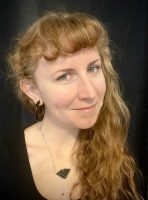
Sara Torgison is an interdisciplinary artist working in ceramic, fiber, and found materials. Her work builds into and extends finite and fragile surfaces to emphasize and inhabit marginal spaces. Strange alliances formed in passages between hard and soft substances are resonant of the shifts inherent in navigating public and private life and the distance between self and other. The action of configuring bridges in transitional zones draws upon traditions of mending and maintenance as a continuous collaborative process.
Sara received an MFA from the University of Cincinnati Department of Design, Architecture, Art and Planning, and a BFA from the California Polytechnic University, Humboldt. Sara is currently Visiting Ceramics Faculty at Miami University of Ohio, and works as a preparator at the Contemporary Arts Center in Cincinnati. She has participated in various artist residencies and workshops, including Penland School of Craft’s winter residency for which she was awarded a distinguished fellowship in 2024. Sara was a 2023 Ohio Arts Council Creative Excellence Grant recipient. Her work is widely exhibited and collected throughout the United States.
HONORABLE MENTIONS

Alex Lukas was born in Boston, MA. With a wide range of influences, Lukas’s practice is focused on the intersections of place and human activity, narrative, history, and invention. His fieldwork, research, and production reframes the monumental and the incidental through intricate publication series, sculptures, drawings, prints, videos, and audio collages. Lukas’s work has been exhibited nationally and internationally, and is included in the collections of the Pennsylvania Academy of the Fine Arts, the Kadist Foundation, the Philadelphia Museum of Art, the San Francisco Museum of Art library, the New York Public Library, and the library of the Museum of Modern Art, New York. Lukas has been awarded residencies at the Bemis Center for the Arts, the Ucross Foundation, the Center for Land Use Interpretation, the Fountainhead, and the John Michael Kohler Arts Center’s Arts/Industry program, among others. He graduated with a BFA from the Rhode Island School of Design in 2003, and received an MFA from Carnegie Mellon University in 2018. Lukas is currently an Assistant Professor of Print and Publication in the Department of Art at the University of California, Santa Barbara, and organizer of CA53776V2.gallery, an experimental exhibition platform on the dashboard of a 2007 Ford Ranger.
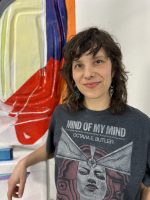
Kristy Hughes is a sculptor, painter, and educator. She received her MFA from Indiana University and her MA and BA from Eastern Illinois University. Hughes was awarded a 2022–23 Visual Arts Fellowship at the Fine Arts Work Center in Provincetown, MA, and has held residencies at the ChaNorth Artist Residency, Hambidge Center for Creative Arts and Sciences, Liquitex Residency at Residency Unlimited, the Studios at MASS MoCA, and a full fellowship at the Vermont Studio Center. Recent solo and group exhibitions include: the Sculpture Center in Cleveland, OH; Provincetown Art Association and Museum, Provincetown, MA; ChaShaMa, New York; Hudson D. Walker Gallery, Provincetown, MA; Soft Times Gallery, San Francisco, CA; Wassaic Project, Wassaic, NY, in addition to exhibitions at universities in North Carolina and South Carolina. Her work has been featured most recently in Maake magazine, New American Paintings, Friend of the Artist, Create magazine, and Vast magazine. Hughes is a full-time lecturer at the University of Vermont in Burlington, VT, where she teaches sculpture, painting, and drawing.
caa.reviews Seeks Two Editorial Board Members and Field Editors in Seven Areas
posted by CAA — Feb 08, 2024
caa.reviews seeks two new Editorial Board Members to each serve a four-year term, July 1, 2024–June 30, 2028.
CAA encourages applications from candidates with a strong record of scholarship who are committed to the imaginative development of caa.reviews. An online, open-access journal, caa.reviews is devoted to the peer review of recent books, museum exhibitions, and projects relevant to the fields of art history, visual studies, and the arts.
The Editorial Board advises the Editor-in-Chief, guides Field Editors in their process of identifying books, exhibitions, and review authors suitable for the journal, and proposes new initiatives for the journal’s editorial programs. Editorial Board Members stay abreast of trends and issues in the field by attending and reporting on sessions at the CAA Annual Conference, as well as other academic conferences, symposia, and events in their fields.
The caa.reviews Editorial Board meets three times a year, twice in the spring and fall and once at the Annual Conference each February. Meetings in the spring and fall are currently held by videoconference, while the February meeting typically occurs in person. Members of all editorial boards at CAA volunteer their services without compensation or financial support for travel to and accommodations at the Annual Conference
Candidates must be current CAA members and should not currently serve on the editorial board of a competing journal or another CAA editorial board or committee. Nominations and self-nominations are welcome. Nominators should ascertain their nominee’s willingness to serve before submitting a letter of nomination. Please email a letter of nomination or self-nomination, describing your nominee’s interest in and qualifications for appointment, the nominee’s CV, and contact information to Eugenia Bell, Editorial Director, ebell@collegeart.org. Please include the subject line caa.reviews Editorial Board Member.
Deadline: Monday, May 6.
CAA is also inviting nominations and self-nominations for individuals to join the caa.reviews Council of Field Editors for a three-year term July 1, 2024–June 30, 2027 (renewable once). An online, open-access journal, caa.reviews is devoted to the peer review of new books, museum exhibitions, and projects relevant to art history, visual studies, and the arts. Candidates may be artists, art historians, art critics, art educators, curators, or other art professionals with stature in the field and with experience writing or editing books and/or exhibition reviews; institutional affiliation is not required.
CAA is searching for Field Editors in the following fields:
- Art of the Ancient Mediterranean, Europe, and West Asia
- Latin American Art
- Photography
- Art of the Ancient Americas
- Exhibitions: Southeast
- Exhibitions: Southwest
- African Art
Working with the caa.reviews Editor-in-Chief, the caa.reviews Editorial Board, and CAA’s staff editor, each Field Editor selects content to be reviewed, commissions reviewers, and considers manuscripts for publication. Field Editors for books are expected to keep abreast of newly published and important books and related media in their fields of expertise, and those for exhibitions should be aware of current and upcoming exhibitions (and other related projects) in their geographic regions.
The Council of Field Editors meets once a year in February at the CAA Annual Conference. Members of all CAA committees and editorial boards volunteer their services without compensation or financial support for travel to and accommodations at the Annual Conference.
Candidates must be current CAA members and should not be serving on the editorial board of a competing journal or another CAA editorial board or committee. Nominations and self-nominations are welcome. Nominators should ascertain their nominee’s willingness to serve before submitting a letter of nomination. Please email a letter of nomination or self-nomination describing your nominee’s interest in and qualifications for appointment, the nominee’s CV, and contact information to Eugenia Bell, Editorial Director, ebell@collegeart.org. Please include the subject line caa.reviews Field Editor.
Deadline: Monday, May 6.
CAA 2023 Professional Development Fellows Announced
posted by CAA — Feb 05, 2024
Congratulations to our 2023 Professional Development fellows, Zoe Weldon-Yochim, University of California, Santa Cruz (Art History) and Kelly Tapia-Chuning, Cranbrook Academy of Art (Visual Art)!
Honorable Mentions: Jocelyn E. Marshall, Emerson College (Art History); Breanna Reiss, University of New Mexico (Art History); Jessica Monette, Stanford University (Visual Art).
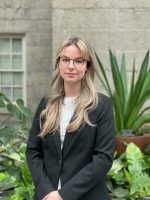
Zoe Weldon-Yochim is a PhD Candidate in Visual Studies at the University of California, Santa Cruz, whose areas of specialization include the art and visual culture of the United States, global contemporary art, and the theories and methods associated with ecocriticism. Her research involves attending to how various artists grapple with the difficulties of visuality and environmental injustices, particularly the long-term and often invisible slow violence of US militarism, nuclear toxicities, and extraction. Her dissertation, “Atomic Afterlives: Visualizing Nuclear Toxicity in Art of the United States, 1979–2011,” focuses on a selection of underrepresented American artists whose work, stemming from genealogies of research-based conceptual art and documentary practices, brings nuclear histories and concerns into aesthetic form in singular, conflictual, and shared ways. In this project, Weldon-Yochim examines how diverse visual approaches—such as installation, photography, print media, and painting—mediate, represent, and give agency to the nuclear and its atomic afterlives. Her research illuminates burgeoning artistic conceptualizations of the intersection of militarism and environmentalism during and beyond the last decade of the Cold War, where particular women, Indigenous, and Asian American artists mobilized varying visual grammar to consider the interconnectedness of environmental injustices and an ever-expanding US military system. Weldon-Yochim’s work has been supported by the American Council of Learned Societies and the Henry Luce Foundation, the Smithsonian American Art Museum, the Center for Advanced Study in the Visual Arts, and numerous university grants.
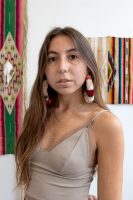
Kelly Tapia-Chuning is a mixed-race Chicana artist of Indigenous descent from southern Utah who is currently based in Detroit. Tapia-Chuning’s work forms as a response to her family’s histories of assimilation, questioning power dynamics attached to representation, racial identity, and language. Tapia-Chuning utilizes research, textile deconstruction, and needle-felting to convey the dichotomy of being nepantla, born in-between spaces and cultures.
In 2020, she received a BFA in Studio Arts from Southern Utah University and is pursuing an MFA in Fiber at Cranbrook Academy of Art, where she was awarded a Gilbert Fellowship. Tapia-Chuning’s work has been included in exhibitions at the Utah Museum of Contemporary Art, GAVLAK (Los Angeles), Onna House (East Hampton, NY), The Border Project Space (NY), and solo exhibitions with Red Arrow Gallery (Nashville, TN) and Harsh Collective (NY). She has been an artist in residence at Stove Works (Chattanooga, TN), and Zion National Park, in Utah. Tapia-Chuning’s work is in numerous public and private collections across the US.
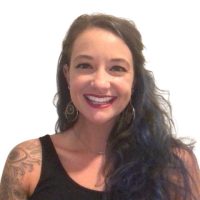
Jocelyn E. Marshall is faculty in the Departments of Visual & Media Arts and Writing, Literature, & Publishing at Emerson College. She previously was a Dissertation Scholar at Brandeis University’s Women’s Studies Research Center. Their interdisciplinary projects focus on contemporary US-based diasporic women and LGBTQ+ artists and writers, researching relationships between historical trauma and queer and feminist activism. Her work has appeared or is forthcoming in the Journal of American Culture, Women & Performance: A Journal of Feminist Theory, Public Art Dialogue, and elsewhere. In 2022, they co-edited Trauma-Informed Pedagogy: Addressing Gender-Based Violence in the Classroom, and in 2023 edited a multimedia issue of Rutgers University’s Rejoinder journal, themed Textual-Sexual-Spiritual: Artistic Practice and Other Rituals as Queer Becoming and Beyond. She also curates contemporary art exhibitions, including Being In-Between | In-Between Being (2020–21) and Creativity in the Time of Covid-19 (2023). She currently co-chairs the Gender & Feminisms Caucus at the Society for Cinema & Media Studies and is a contributing editor at Art Journal Open for the Feminist Interview Project.
Dr. Marshall’s research has been supported by, among other institutions, the Mark Diamond Research Foundation, J. Burton Harter Foundation, and New York Public Library. Her first book project draws from interviews and archival research to connect select US-based Asian and Latinx diasporic women artists as an underexamined cohort in feminist art history, contextualizing their aesthetic and poetic interventions as coterminous with shifts in US trauma studies and feminist theory. A portion of this project received Honorable Mention for the 2022 National Women’s Studies Association-Feminist Formations Paper Award.
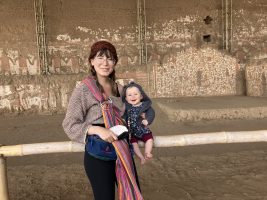 Breanna Reiss is a PhD candidate at the University of New Mexico who studies pre-Hispanic ceramics, primarily from coastal Ecuador and northern Peru, with a focus on their iconography and elements of their composition. She also received her MA from UNM where, in partnership with the Earth and Planetary Sciences Department, she examined the chemical composition of rare blue and blue-green post-fire ceramic figurine colorants from Ecuador. Her dissertation explores ancient Moche plant motifs, relating them to identifiable species and exploring their contextual relationships to narrative scenes. This plantcentric approach has identified several biomes and ecological indicators important to Moche culture. Along with teaching introductory art history courses, she has received numerous fellowships with UNM’s Center for Southwest Research and the Digital Initiatives and Scholarly Communication Department, and currently works for Georgia Tech Research Institute.
Breanna Reiss is a PhD candidate at the University of New Mexico who studies pre-Hispanic ceramics, primarily from coastal Ecuador and northern Peru, with a focus on their iconography and elements of their composition. She also received her MA from UNM where, in partnership with the Earth and Planetary Sciences Department, she examined the chemical composition of rare blue and blue-green post-fire ceramic figurine colorants from Ecuador. Her dissertation explores ancient Moche plant motifs, relating them to identifiable species and exploring their contextual relationships to narrative scenes. This plantcentric approach has identified several biomes and ecological indicators important to Moche culture. Along with teaching introductory art history courses, she has received numerous fellowships with UNM’s Center for Southwest Research and the Digital Initiatives and Scholarly Communication Department, and currently works for Georgia Tech Research Institute.
Jessica Monette is an interdisciplinary artist living in the Bay Area whose creative endeavors span the diverse realms of painting, sculpture, installation, and collage. Materiality forms the core of Monette’s artistic expression, each chosen element serving as a deliberate conduit for context and personal narrative. Her repertoire includes a wide array of materials—from house paint, plaster, and thin-set mortar to found and fabricated objects, site-specific soil, rope, nails, cotton, railroad spikes, water from the Mississippi River, and clothing collected from various family members. To New Orleans–born Monette, these materials aren’t just art components, her materials are agents for rebuilding and storytelling. The cataclysmic events of Hurricane Katrina in 2005 undergird her work and serve as a potent visual metaphor for contemporary colonial sediment, encapsulating a temporal lens that reveals the nuances of systemic oppressions. Economic inequality, gentrification, unequal aid distribution, environmental racism, forced migration, and the erosion of cultural heritage—Katrina becomes a concentrated manifestation of these issues.
Monette’s reconstruction of her familial archive, challenges systems of oppression that are created to perpetuate silence. The threads of her narrative, woven together through materials and thematic exploration, contribute to a powerful dialogue that invites viewers to reexamine the need for persistence of cultural memory and the tenacity of the human spirit.
Learn more about CAA Professional Development Fellowships here.
AC2024 Edwards Memorial Support Grant Recipients Announced
posted by CAA — Jan 12, 2024
The CAA Edwards Memorial Support Grants, in memory of Archibald Cason Edwards Sr. and Sarah Stanley Gordon Edwards and made possible by Mary D. Edwards, support women who are emerging scholars and have received their PhD within the past two years or who are nearing the end of a doctoral program. Congratulations to the Annual Conference 2024 recipients, Daniella Berman and Phillippa Pitts!

Daniella Berman, Independent Scholar
Presentation: Revolution as Natural Disaster: Re-Framing 1789
Session: Disaster! Trouble in Eighteenth-Century Art
Presentation Abstract:
In Auguste Desperret’s lithograph, a volcano erupts the word LIBERTÉ. Lava cascades down, threatening to encircle successive cityscapes (representing countries at risk, identified by their flags) and sending figures – many in military uniform – running in the midground. In the foreground, the ruins of a castle bear the date 1789, surrounded by stone fragments inscribed with abandoned values including diving rights and feudalism. The sky is peppered with boulders bearing the words julliet, in reference to the July 1830 revolution.
Produced in 1833 for the satirical publication La Caricature, Desperret’s print Troisième eruption du volcan de 1789, reframes the impacts of the French Revolution as a natural disaster. In so doing, it draws on tropes prevalent in eighteenth-century dialogues inspired by Voltaire among others, that positioned the Revolution as a rupture, oftentimes violent, akin to natural phenomena. However, Desperret’s print calls into question how these natural disaster metaphors for the French Revolution and the St. Dominque revolt were utilized and transformed as the event was repeatedly reframed in the years following 1789 and well into the nineteenth century. What was the function of such analogies, and how were they visualized? This paper will explore the manifestations of Revolution as natural disaster across the material culture of the long eighteenth century, tracing the shifting dialogues that positioned the Revolution as a rupture or cyclical, as progress or failure, as upheaval or disruption, while considering the legacies of this rhetoric in the historiography of the Revolution and related visual material.
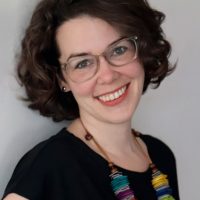
Phillippa Pitts, Boston University
Presentation: Fever Trees & Pharmacopeic Dreams: The Medical Manifest Destiny within Frederic Edwin Church’s Heart of the Andes
Session: U.S. Imperialism, Extraction, and Ecocritical Art Histories
Presentation Abstract:
Although often overlooked, the pursuit of health was central to the nineteenth-century ideas of empire that shaped both U.S. Americans’ imagined sphere of influence and the period’s enthusiasm for grand landscape painting. As the source of lifesaving cinchona, quinine, and diverse Peruvian elixirs, the Andes loomed particularly large in the antebellum imagination. Plays, panoramas, popular scientific texts, and patent medicine ads all cultivated popular interest in this supposed Edenic garden of health and abundance under perpetual threat of spectacular destruction by earthquakes and volcanoes. Taking Frederic Edwin Church’s The Heart of the Andes as its central case study, this paper recreates the conditions of vision in the antebellum city to reveal the underexamined pharmacopeic narratives within the painting and its dramatic performance. In doing so, it highlights how such displays of biodiverse abundance concealed the actual violence of botanical extraction. Indigenous and African laborers were, as one period observer noted, “made human sacrifices to furnish health to the white foreigners,” dying of disease as they carried the lifesaving treatments that would safeguard European and U.S. American imperial forces across the Global South. Today’s scholarly emphasis on the genocidal colonial excavation of Andean gold and silver has similarly elided the cultural, ecological, and human cost of extracting vegetable resources. Pairing insights from ecocriticism and critical disability studies, this paper argues for the importance of recognizing this medical Manifest Destiny, as well as artists’ role in naturalizing such discourse.
S. Hollis Clayson Named AC2024 Distinguished Scholar
posted by CAA — Nov 29, 2023
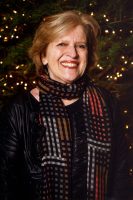
The Distinguished Scholar session at the 112th CAA Annual Conference will honor the acclaimed career of S. Hollis Clayson. Clayson has been at the forefront of art history scholarship as part of the first generation of feminist academics whose work centers on representations of the female body, the role of art in social and political conflict, and the intersection of art and technology.
Hollis Clayson is Professor Emerita of Art History and Bergen Evans Professor Emerita in the Humanities at Northwestern University where she taught for thirty-five years, advising twenty-seven doctoral dissertations. A specialist in nineteenth-century European art, she has published widely on art practice in Paris as well as transatlantic cultural exchanges, especially those between France and the United States. Her books include Painted Love: Prostitution in French Art of the Impressionist Era (Yale University Press, 1991), Paris in Despair: Art and Everyday Life Under Siege (1870–71) (University of Chicago Press, 2002), Is Paris Still the Capital of the Nineteenth Century? Essays on Art and Modernity, 1850–1900, co-edited with André Dombrowski (Routledge, 2016), and Illuminated Paris: Essays on Art and Lighting in the Belle Époque (University of Chicago Press, 2019). Her book in progress is entitled The Dark Side of the Eiffel Tower.
Clayson’s research has been supported by the American Council of Learned Societies (ACLS), the Getty Research Institute, the Clark Art Institute, Institut national d’histoire de l’art (INHA), the Huntington Library, Columbia University’s Reid Hall in Paris, and the Center for the Advanced Study of the Visual Arts (CASVA) at the National Gallery of Art. In early 2014, she was named a Chevalier in the Ordre des Palmes Académiques by the French Ministry of Culture.
From 2006–13 she served as the founding Director of the Alice Kaplan Institute for the Humanities at Northwestern. She was Sterling Clark Professor in Art History, Williams College in fall 2005; the Samuel H. Kress Professor at CASVA (2013–14; and in fall 2015, she was Kirk Varnedoe Visiting Professor at the Institute of Fine Arts, New York University. Most recently, she was the 2022–23 R. Stanton Avery Distinguished Fellow at the Huntington Library.
Dr. Clayson’s career and her impact on the field will be celebrated with presentations and a dialogue with scholars and colleagues:
Session Chairs:
Anne Helmreich, Smithsonian Archives of American Art
Hector Reyes, University of Southern California
Session Panelists:
Thomas Crow, New York University
André Dombrowski, University of Pennsylvania
Marc Gotlieb, Williams College
Martha Ward, University of Chicago
The AC2024 Distinguished Scholar Session will be held on Thursday, February 15, 4:30–6:30 p.m. CT at the Hilton Chicago. This event will also be livestreamed on YouTube.
Register now for the CAA 112th Annual Conference, February 14–17, 2024 in Chicago!



